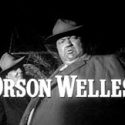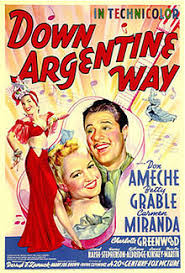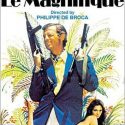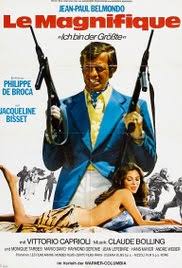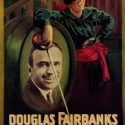Touch of Evil: Justice and the Law across the Mexican border
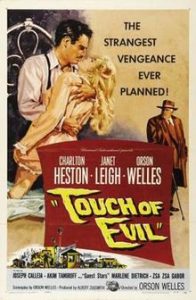
Touch of Evil (1958), acted and directed by Orson Welles, is a movie about violence, corruption and murder in the Mexican border town of Los Robles. The movie begins with the activation of a time-bomb mechanism. The explosion of this bomb will go on to unleash a series of events which will affect all the characters in the movie (main and small ones) and lead them to pain, tragedy, and death. The story-line is well-intertwined given that the bomb has a direct link to an American builder contractor and his girlfriend who are killed in the explosion. This is to say that, the main characters in Touch of Evil, Mike Vargas (the Mexican detective) and Susan Vargas (Vargas’ wife), have to stop their honeymoon in the U.S- Mexico border town of Los Robles, when the explosion occurs. Mike Vargas and Susan Vargas will face the giant American Police captain Hank Quinlan who is brought to life by Orson Welles himself.
There are many excellent movie sequences in Touch of Evil, but I will be referring only to three segments of the film which stayed with me and which I think are important to explore. The first scene I want to analyze is the one after the car explodes at the crossing over the Mexican border. The second scene is the interrogation of Sanchez. Thirdly, the incriminating scene between Vargas, Menzies and Hank.
First, during the first minutes of the movie, the viewer gets to see the cross-border town of Los Robles and the security border check points on each side. Vargas, a Mexican police investigator, and his American wife Susan, cross the border by foot to the U.S’ side. Hence, the movie depicts a sort of free or fluid accessibility across the border in where people from both countries can come and go with no problem. The only question asked is: Are you American? For which Susan answers yes and this allows her and her husband to cross over the check-point and to enter U.S.A’s soil without showing a passport. Nevertheless, later in the same scene, the viewer can see how the American police enter Mexico illegally. This reference is important because it is not just the Mexicans who crossed illegally here but the Americans do it as well.
One of the lines which resonated with me came from the woman who drives with the contractor by car and are about to die, “I got this ticking noise in my head.” The ticking noise to which she is referring, as all the audience knows, is the time-bomb itself which is about to explode in the car. However, she is quickly dismiss by the border American officers with a simple, yes! And never gets around to ask what’s really happening. I find this scene interesting because the ticking bomb in her head counts the remaining time she and her boyfriend have left. Additionally, right after it, Susan appears talking with Mike saying, “You realize this is the first time we’ve been together in my country?” Mike replies back saying, “Do you realize I’ve not kissed you in an hour?” For this reason, I like the immediacy given to time in both lines marking the end for some and the beginning of suffering for others, as well as, their final triumph.
Second, the characterization of both, Mike Vargas and Susan Vargas, is exemplary of good people. Mike, a Mexican Narcotics officer main mission is to bring down the Grandi family and their illegal drug business. For her part Susan, a typical American-wife, follows her husband’s orders and suggestions to the letter. In a sense, their commitment to their marriage is demonstrated on screen. This is not to mention their undeniable love for each other (a romantic theme) and their resilience to remain good in the midst of evil which allows them to remain together in the end.
For instance, when Susan is waiting for her husband at the motel, she faces off the gang of Grandi’s boys. These men and women thugs and drug addicts enter Susan’s room in order to scare her with the idea of rape, just as uncle shorty ordered it. But, at that moment, it seems like Susan is about to be raped by these three criminals and even one of the women says “I want to watch.” It is not until the end, when these same women are seen talking with ‘uncle shorty’, when the audience knows that Grandi only wanted to scared Susan, so as to incriminate Vargas’ wife for drug possession and murder. One way or another, we as the audience are not sure if Susan was raped or not and maybe this element in the movie is another shade of evil which spills over the good characters of Susan and Vargas to highlight their goodness.
The final scene in which Menzies teams up with Mike Vargas to get Hank’s incriminating confession on tape, is of great importance. For once, this long sequence highlights the brilliant writing skills of Welles. The creativity, fluidity and suspense of the lines spoken by Hank are stellar and build up to the dramatic ending of the movie. It also takes the viewer through a historic timeline given that Hank sees at the beginning of this shot two of his most important friends, Pete and Tana. Hank asks Tana to read him the tarot for which Tana tells him that he has “no future” as a way to foreshadow his ending. Later, when Hanks leaves Tana’s house, Hank accuses Pete of becoming an idealist for partnering up with Mike Vargas. It is important to mention that, Mike and Pete’s partnership contrasts directly with that of Hank and Shorty’s. The first partnership is good and lawful one while that one of Hanks and Shorty is shady, illicit, and evil.
What’s more, the dialogue of Hank is great because he also contemplates what’s around him while being drunk and on his way to death. Hanks realized that the Mexican oil fields are “pumping money” and questions the financial situation of his own life. “Don’t you think I could have been rich? A cop in my position?” With these questions, Hanks shows his immorality, contempt for his profession and, more importantly, his greed for money. Hence, when he dies at the hand of his best friend, Pete, there is a clear justification for this action and the audience don’t feel so bad given his evilness of character.

